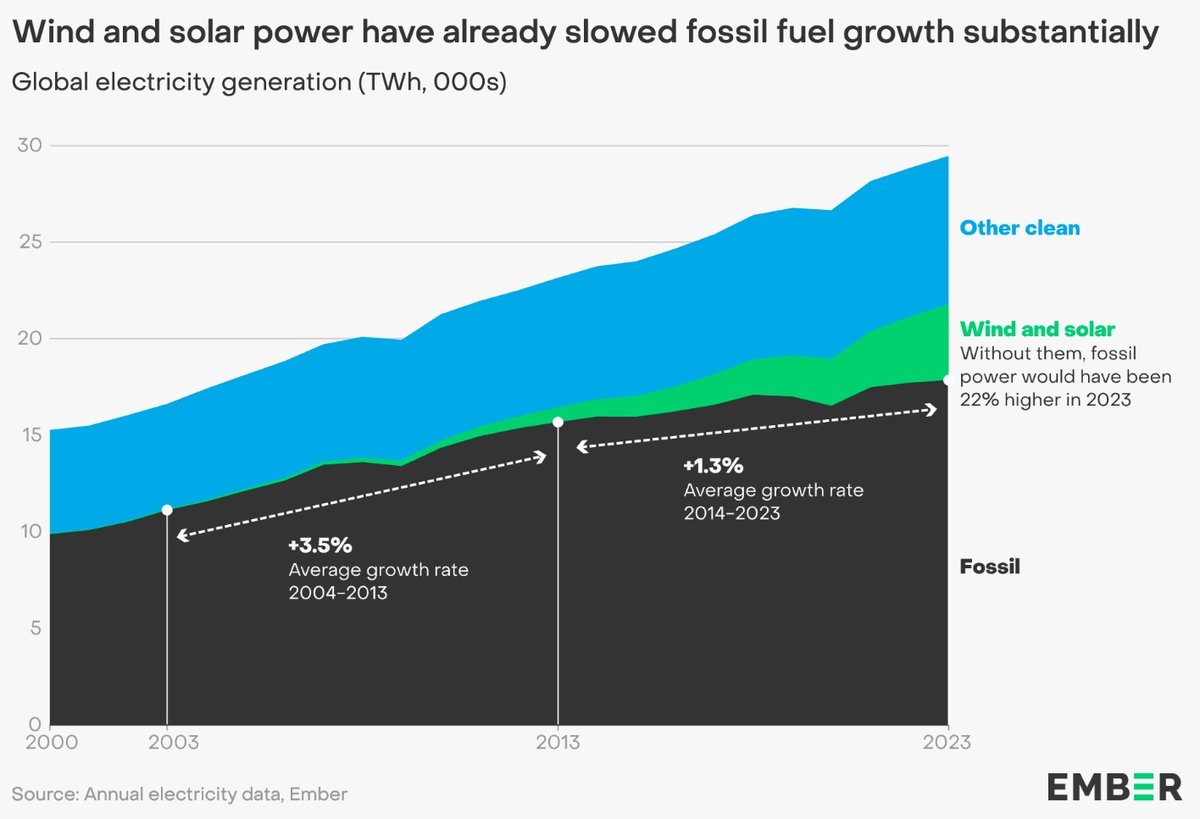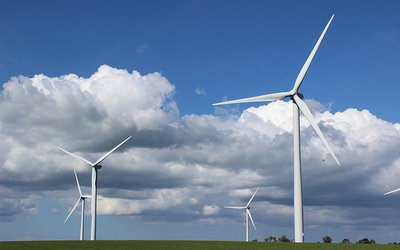
Graph: Global electricity generation from fossil fuels (black), wind and solar (green) and other clean energy technologies (blue) between 2000 and 2023. Source: Ember.
A glimmer of hope
Among all the doom stories about climate change, there is also a glimmer of hope. We seem to have reached a turning point in the use of fossil fuel for electricity generation. Electricity produced by wind and solar is growing so fast now that it exceeds the rising demand of electricity. This means we have now reached a peak in fossil fuel electricity generation. This was concluded from the Global Electricity Review 2024, a new analysis from thinktank Ember.
Renewables generated a record 30% of global electricity in 2023, driven by growth in solar and wind, Ember shows. 2023 was likely the pivot point, with record construction of solar and wind. According to Ember, ‘a new era of falling fossil fuel generation is imminent’.
2% decline in 2024
In the period 2004-2013, global electricity generation from fossil fuels grew by 3.5%, annually. In the period 2014-2023, this annual growth rate has decreased to 1.3%. From now on, a decline in fossil fuel use for electricity generation is expected. Ember estimates that this decline will be 2% in 2024.
Wind and solar have expanded from 0.2% of the global electricity mix in 2000 to 13.4% in 2023. The contribution of wind is the largest: 7.8%. Hydropower remains the world’s largest source of clean power, with a 14.3% share of the world’s electricity mix.
Still a long way to go
But unfortunately, this is no reason to think that everything will be fine now. Half a year ago, the COP28 in Dubai set the target of tripling the use of renewable energy sources by 2030. Achieving this goal, among a number of other objectives, is necessary to achieve the Paris Agreement's goal of limiting global warming to 1.5°C compared to pre-industrial levels. This is a huge step. In our previous post we presented the findings of a Guardian survey that ‘almost 80% of the IPCC experts think global temperature rise will exceed 2°C compared to pre-industrial levels’.
One of the threats to the Paris objective is the fact that electricity demand is still growing, mainly in China.
Source: Ember, 2024. Global Electricity Review 2024.








